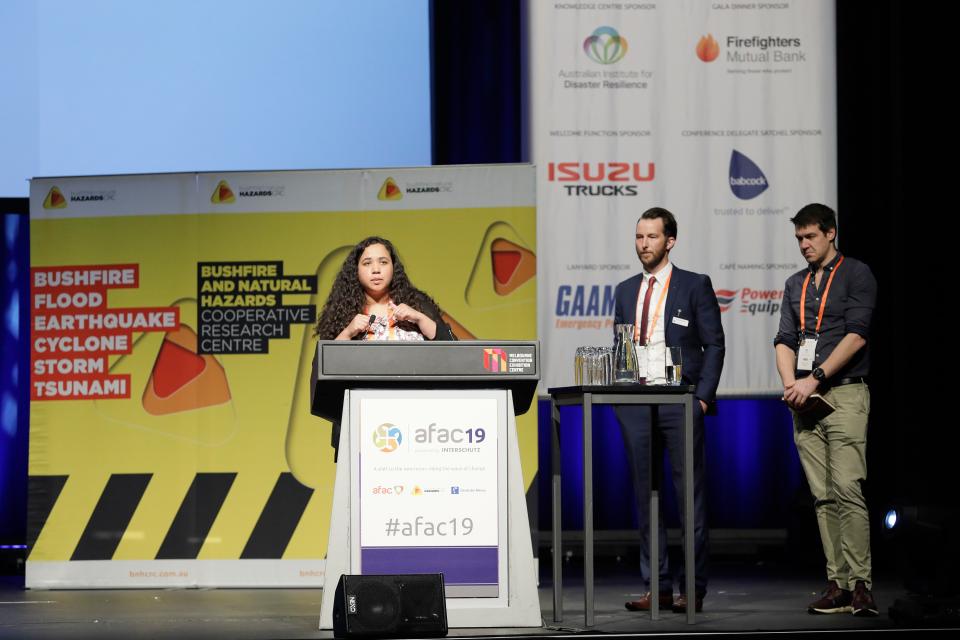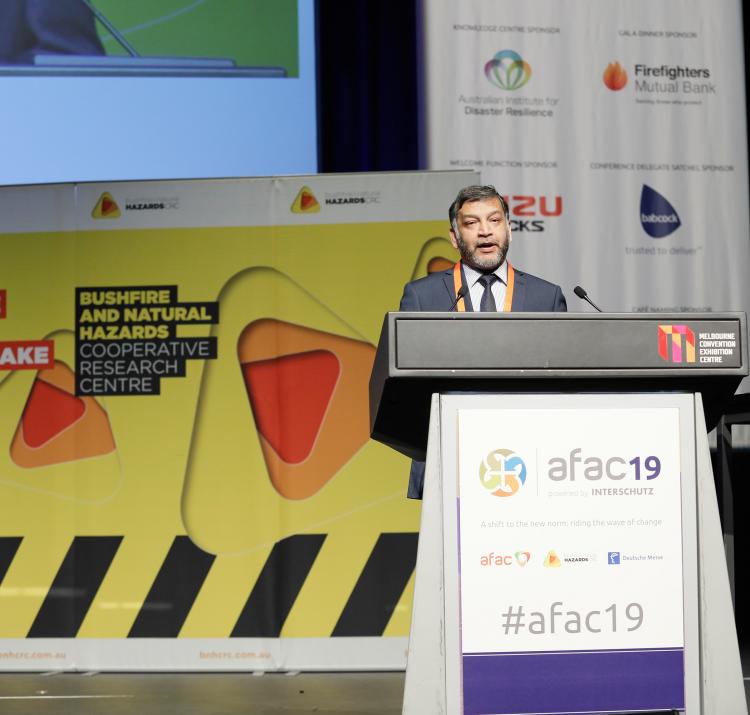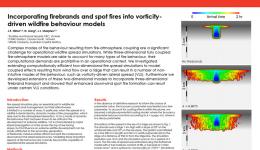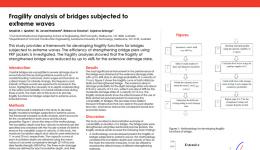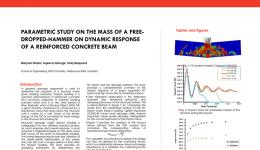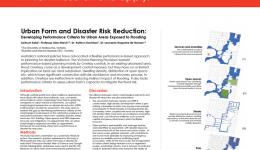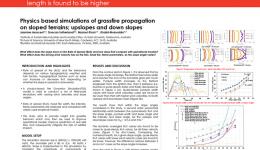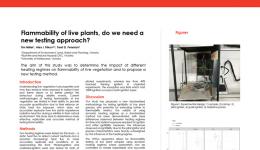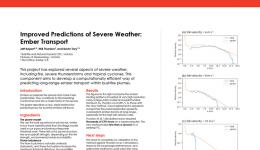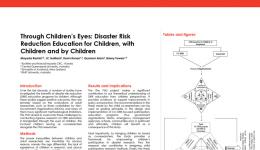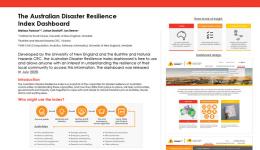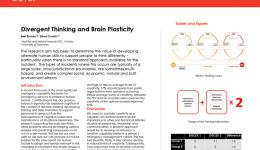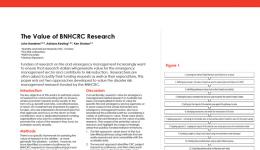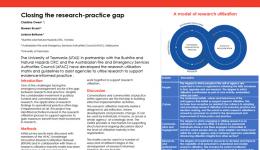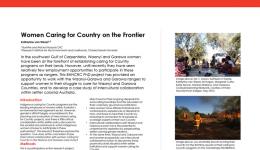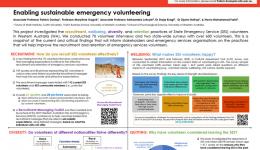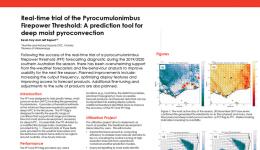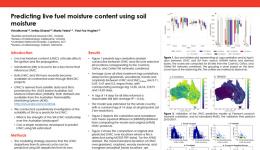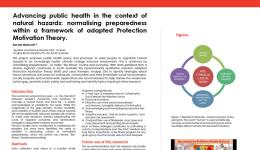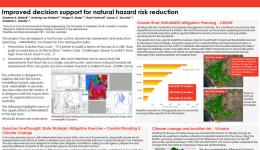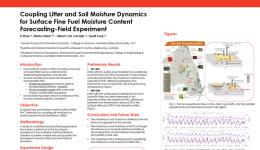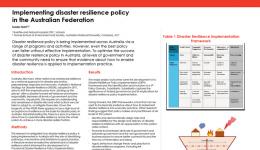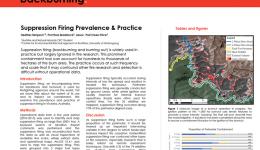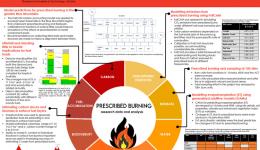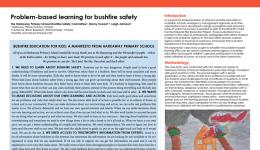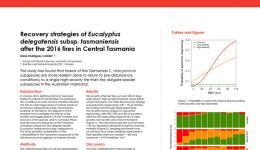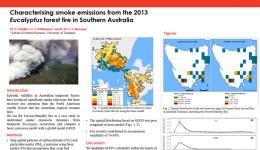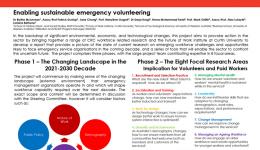Related
Key findings: Two-dimensional fire simulators have been extended to model vorticity-driven lateral spread and incorporate spotting processes.
Key findings: Dynamic wind reduction factors have considerable effects on forest fires where variable canopy heights play important roles.
Key findings: A free online course on the economics of natural hazards to help practitioners become enthusiastic and effective utilisers of economic analysis
Key findings: Fragility functions development frameworkis introduced for bridgessubjected to extreme wave-induced forces.
Key findings: The cushioning factor is a parameter that can show the structural response and have a regressive power relationship with the deformation of the structure.
Key findings: Only 1 in 5 first responders seek and receive adequate help for a mental health condtion
Key findings: Appropriate management of disaster risk in a dynamic urban context requires performance criteria to be explicit in considering both direct and indirect impacts generated by the interdependent elements of urban system to which these criteria apply.
Key findings: At different slope angles and driving wind velocities, different operational quasi-steady Rate of Spread (RoS )of fire roughly lies between dynamic maximum, minimum and averaged RoS values
Key findings: Comprehensive School Safety: A participatory approach to school bushfire emergency management planning.
Key findings: The validity of using dynamic heating regimes and VHFlux apparatus as a standardised method has been demonstrated.
Key findings: Our new method for calculating bushfire ember transport is accurateand very fast.
Key findings: “What is essential is to realize that children learn independently, not in bunches; that they learn out of interest and curiosity, not to please or appease the adults in power; and that they ought to be in control of their own learning, deciding for themselves what they want to learn and how they want to learn it.”
Key findings: Validation of firebrand model in fire dynamic simulator with tree burning experimental data, and quantifying firebrand landing and heat flux on structures.
Key findings: Long term support from Fire and Emergency Services Agenciesis necessary to develop the relationships required to appropriately engage with Remote Indigenous Communities
Key findings: More than 90% of people who drive through floodwater experience no adverse consequences
Key findings: Remotely sensed data can improve flood forecasting capability in poorly gauged catchments
Key findings: Cultural or traditional burning requires takingthe long view about how to live with each other and Country
Key findings: The Australian Disaster Resilience Index is a snapshot of the capacities for disaster resilience in Australian communities. A dashboard will help communities, governments and industry explore the index and understand the factors that influence disaster resilience around Australia.
Key findings: Emergency managers sometimes need to think outside the box. We created a technique called Stretch-Thinking Loops to solve this problem. Using this technique, groups improved their options analysis by 86%.
Key findings: A pragmatic approach to valuing research on disaster risk reduction
Key findings: The difference between a future where emergency volunteeringstruggles or flourishes rests on leadership, resourcing, risk tolerance, cultural change, and shared learning.
Key findings: Real time wildfire detection trial using Himawari-8
Key findings: Spot fires and topography interact to enhance fire rate of spread.
Key findings: The project will be assessing the relationship that people have with natural hazards in their region by conducting a range of risk perception surveys.
Key findings: Coupled modelling can provide the next level of value for fire danger forecasting, if it can be developed to be faster than real time, by enough to matter.
Key findings: The drive to use research to inform practice is growing. This research has developed a self-assessment tool and guidelines to help agencies maximize their investment in research.
Key findings: Ongoing dispersal shapes intercultural collaboration with women caring for sentient and gendered Country.
Key findlings: Managing expectations and satisfying psychological needs are critical to the recruitment and retention of emergency services volunteers.
Key findings: “The PFT provided very useful guidance to forecasters briefing emergency services.”
Key findings: The study explores the live fuel moisture – soil moisture relationship at a national scale and suggests an approach to predict live fuel moisture content.
Key findings: High-resolutionsimulations provide valuable insight into the meteorology of the Tathrabushfire.
Key findings: Building capacity to prepare: A generative model of community engagement for preparedness
Key findings: Easily achievable fire-fitness strategies normalise preparedness to become a routine part of daily life, narrowing the awareness-action gap.
Key findings: Red headers on bushfire evacuation messages help encourage community members to follow emergency instructions
Key findings: Effective flash flood forecasts and warnings to improve risk awareness and encourage protective action
Key findings: Bracings, walls, and both elements used together can be very effective in increasing the capacity and performance levels of limited ductility RC buildings
Key findings: A flexible approach to understanding and planning risk reduction for different hazards and from different perspectives
Key findings: We found there is no one-size-fits-all solution for prescribed burning. Risk mitigation varies by region and management value.
Key findings: Certain house types can benefit from retrofitting for severe wind events
Key findings: Personality traits and sociocultural environment predict floodwater driving
Key findings: A better understandingof the built environmentcanimprove forecasts of wind impact on residential buildings.
Key findings: The influence of soil moisture on litter fuel moisture content (FMC) depends on the soil condition and the arrangement of the litter layer. Wetter soil can contribute to higher litter FMC. Subsurface litter, which is in contact with the topsoil, is more sensitive to the influence of soil moisture than surface litter. The influence of soil moisture on litter FMC is through its influence on local air humidity.
Key findings: Successful disaster resilience policy relies on effective implementation enacted through governance arrangements informed by the Subsidiarity Principle
Key finidings: Suppression firing is a prominent containment tool. It occurred on half of the large fires in Victoriaand ranged from ~1 to ~20,000 hectares of burn area. One-fifth of the total fire perimeter length was containedby backburning.
Key findings: New evidence-based guide to disaster recovery
Key findings: Optimisation of fuel reduction burning regimes for carbon, water and vegetation
Key finding: Learner agency is an essential element of effective bushfire education for upper primary school children.
Key findings: Forests of the Tasmanian E. delegatensissubspecies are more resilientto a single high-severity firethan the mainland Australian subspecies.
Key findings: Global models can produce reliable smoke emission estimates from eucalyptus forest fires
Key findings: Workforce 2030: A utilisationproject from the Enabling Sustainable Emergency Volunteering research stream

